
Best of Brussels : Private Luxury Tour
4 h
Private
Instant confirmation
About this activity
Itinerary
This is a typical itinerary for this product
Stop At: Manneken Pis, corner of rue du Chene and rue de l'Etuve, Brussels 1000 Belgium
Mannekin PisAlong the Rue de l'Etuve is Brussels' best-known landmark, the Manneken Pis, usually besieged by a throng of tourists. Although he can be traced back to at least 1388, nothing much is known about the origin of the figure of a little boy urinating, popularly referred to as "the oldest citizen of Brussels." The Manneken is, however, surrounded by various legends. According to one, the fountain is a memorial to a courageous infant who averted a conflagration, according to another, it commemorates the son of a count who succumbed to a pressing urge while taking part in a procession. The present statue was made in 1619 by Jérôme Duquesnoy the Elder and has been stolen on several occasions though always recovered. During major celebrations, events, and festivals in Brussels, the statue is famed for being dressed in costume
Duration: 20 minutes
Stop At: St. Michael and St. Gudula Cathedral (Cathedrale St-Michel et Ste-Gudule), Parvis Sainte-Gudule Treurenberg Hill, Brussels 1000 Belgium
Dedicated to St. Michael and St. Gudula (the patron saints of Brussels) this Gothic church was first founded in 1225 but only completed in the 15th century. The facade is impressive, rising majestically above a broad flight of steps and crowned with twin 69-meter-high towers designed by Jan van Ruysbroeck. The beautifully proportioned interior (108 meters by 50 meters) is lavishly furnished and is home to some outstanding stained glass windows created by Bernard van Orley. Head to the transepts to see the finest examples depicting Charles V and Isabella of Portugal (south transept) and the Hungarian royal pair Louis II and Mary (north transept), and then into the Chapel of the Holy Sacrament, to the left of the choir, where the window illustrates the story of the Miracle of the Host.
Duration: 30 minutes
Stop At: Place Royale, Brussels 1000 Belgium
A favorite attraction for photo-ops, the most important building on this square is the Royal Palace (Palais Royal), which is used by the Belgian royal family as an official residence. The Belgian flag, flown from the roof, signals the sovereign's presence, and a ceremonial Changing of the Guard takes place every day at about 2:30pm. Surrounding the palace are an ensemble of cultural buildings boasting Neoclassical facades. The Palais des Académies, home of the Royal Academy of Sciences and once the residence of the Crown Prince of Orange, and the Palais des Beaux-Arts (Paleis voor Schone Kunste) on the west side of the plaza, designed and built in the 1920s by Victor Horta, are two of the finest examples.
Duration: 30 minutes
Stop At: Atomium Square Laeken, Brussels 1020 Belgium
Along with Manneken Pis, the Atomium is Brussels' best-known landmark attraction, and although it's a bit of a journey by tram to get out here, the bizarre 102-meter-high steel and aluminum structure, designed by the architect André Waterkeyn for the 1958 Brussels World Exhibition, is the city's most surreal sight. The building represents a molecule of iron magnified 165 million times, and visitors may enter the interior where four of the nine spheres are now used for the presentation of a show about human life called Biogenium.
Duration: 30 minutes
Stop At: Mont des Arts, Brussels 1000 Belgium
The Mont des Arts was created between 1956 and 1958, occupying the elevated site between the Place Royale and the Place de l'Albertine. The architecturally imposing complex of large buildings includes the Bibliothèque Albert I and the strikingly modern Palais de la Dynastie and Palais de Congrès. From the square between them is a fine view of the lower central city. The Bibliothèque Albert I was founded during the period of Burgundian rule and comprises more than three million volumes together with a valuable collection of manuscripts and several interesting museums.
Duration: 20 minutes
Stop At: Notre Dame du Sablon, Rue de la Regence / Regentsschapsstraat 3b Entrée rue des Sablons et pas rue de la Régence, Brussels 1000 Belgium
The 15th- to 16th-century church of Notre-Dame du Sablon (Onze Lieve Vrouw op de Zavel), generally considered one of the loveliest Late Gothic churches in Belgium, was built as a replacement for a small chapel first erected on the sandy expanse of the Sablon by the Crossbowmen's Guild in 1304. The interior of the church is breathtaking, in particular because of its marvelous stained glass. Also of interest is the burial chapel of the Thurn und Taxis family, partly the work of Luc Fayd'herbe. Kept in the sacrarium is a figure of the Virgin, a copy, so legend has it, of a Madonna brought to the chapel in 1348 by a woman from Antwerp, Baet Soetens, to whom the Virgin had appeared.
Duration: 20 minutes
Stop At: Parc du Cinquantenaire, Avenue de la Renaissance 1000 Brussels, Belgium, Brussels 1000 Belgium
The Parc du Cinquantenaire was established in 1880 to commemorate the country's 50th anniversary. Its centerpiece is the monumental Palais du Cinquantenaire, the two wings of which, linked in 1905 by a massive triumphal arch designed by the French architect Charles Girault, house two of Brussels' most interesting museums. The Royal Art and History Museum is home to one of the most extensive tapestry collections in the world, and the Belgian Army Museum and Museum of Military History (Koninklijk Museum van het Leger en van de Militaire Geschiedenis) provides an overview of the development of military technology and of the major campaigns fought on Belgian soil.
Duration: 20 minutes
Stop At: National Basilica of the Sacred Heart, Parvis de la Basilique 1, Koekelberg, Brussels 1081 Belgium
The Koekelberg district is dominated by the massive Basilique Nationale du Sacré Coeur (Nationale Basiliek van het Heilig Hart), the fifth largest church in the world and brainchild of Leopold II, begun in 1905 to mark the country's 75th anniversary. The building was only completed in 1970. Not surprisingly, it displays something of a mixture of styles, impressing nevertheless by its sheer size (141 meters by 107 meters). Inside is an excellent collection of art and an ongoing exhibition on the history of the basilica. The picture of Christ giving his blessing, which hangs above the altar, is by Georges Minne.
Duration: 20 minutes
Stop At: Council of the European Union, Rue de la Loi 175, Brussels 1000 Belgium
European Quarter
Duration: 15 minutes
Read more
Show less
This is a typical itinerary for this product
Stop At: Manneken Pis, corner of rue du Chene and rue de l'Etuve, Brussels 1000 Belgium
Mannekin PisAlong the Rue de l'Etuve is Brussels' best-known landmark, the Manneken Pis, usually besieged by a throng of tourists. Although he can be traced back to at least 1388, nothing much is known about the origin of the figure of a little boy urinating, popularly referred to as "the oldest citizen of Brussels." The Manneken is, however, surrounded by various legends. According to one, the fountain is a memorial to a courageous infant who averted a conflagration, according to another, it commemorates the son of a count who succumbed to a pressing urge while taking part in a procession. The present statue was made in 1619 by Jérôme Duquesnoy the Elder and has been stolen on several occasions though always recovered. During major celebrations, events, and festivals in Brussels, the statue is famed for being dressed in costume
Duration: 20 minutes
Stop At: St. Michael and St. Gudula Cathedral (Cathedrale St-Michel et Ste-Gudule), Parvis Sainte-Gudule Treurenberg Hill, Brussels 1000 Belgium
Dedicated to St. Michael and St. Gudula (the patron saints of Brussels) this Gothic church was first founded in 1225 but only completed in the 15th century. The facade is impressive, rising majestically above a broad flight of steps and crowned with twin 69-meter-high towers designed by Jan van Ruysbroeck. The beautifully proportioned interior (108 meters by 50 meters) is lavishly furnished and is home to some outstanding stained glass windows created by Bernard van Orley. Head to the transepts to see the finest examples depicting Charles V and Isabella of Portugal (south transept) and the Hungarian royal pair Louis II and Mary (north transept), and then into the Chapel of the Holy Sacrament, to the left of the choir, where the window illustrates the story of the Miracle of the Host.
Duration: 30 minutes
Stop At: Place Royale, Brussels 1000 Belgium
A favorite attraction for photo-ops, the most important building on this square is the Royal Palace (Palais Royal), which is used by the Belgian royal family as an official residence. The Belgian flag, flown from the roof, signals the sovereign's presence, and a ceremonial Changing of the Guard takes place every day at about 2:30pm. Surrounding the palace are an ensemble of cultural buildings boasting Neoclassical facades. The Palais des Académies, home of the Royal Academy of Sciences and once the residence of the Crown Prince of Orange, and the Palais des Beaux-Arts (Paleis voor Schone Kunste) on the west side of the plaza, designed and built in the 1920s by Victor Horta, are two of the finest examples.
Duration: 30 minutes
Stop At: Atomium Square Laeken, Brussels 1020 Belgium
Along with Manneken Pis, the Atomium is Brussels' best-known landmark attraction, and although it's a bit of a journey by tram to get out here, the bizarre 102-meter-high steel and aluminum structure, designed by the architect André Waterkeyn for the 1958 Brussels World Exhibition, is the city's most surreal sight. The building represents a molecule of iron magnified 165 million times, and visitors may enter the interior where four of the nine spheres are now used for the presentation of a show about human life called Biogenium.
Duration: 30 minutes
Stop At: Mont des Arts, Brussels 1000 Belgium
The Mont des Arts was created between 1956 and 1958, occupying the elevated site between the Place Royale and the Place de l'Albertine. The architecturally imposing complex of large buildings includes the Bibliothèque Albert I and the strikingly modern Palais de la Dynastie and Palais de Congrès. From the square between them is a fine view of the lower central city. The Bibliothèque Albert I was founded during the period of Burgundian rule and comprises more than three million volumes together with a valuable collection of manuscripts and several interesting museums.
Duration: 20 minutes
Stop At: Notre Dame du Sablon, Rue de la Regence / Regentsschapsstraat 3b Entrée rue des Sablons et pas rue de la Régence, Brussels 1000 Belgium
The 15th- to 16th-century church of Notre-Dame du Sablon (Onze Lieve Vrouw op de Zavel), generally considered one of the loveliest Late Gothic churches in Belgium, was built as a replacement for a small chapel first erected on the sandy expanse of the Sablon by the Crossbowmen's Guild in 1304. The interior of the church is breathtaking, in particular because of its marvelous stained glass. Also of interest is the burial chapel of the Thurn und Taxis family, partly the work of Luc Fayd'herbe. Kept in the sacrarium is a figure of the Virgin, a copy, so legend has it, of a Madonna brought to the chapel in 1348 by a woman from Antwerp, Baet Soetens, to whom the Virgin had appeared.
Duration: 20 minutes
Stop At: Parc du Cinquantenaire, Avenue de la Renaissance 1000 Brussels, Belgium, Brussels 1000 Belgium
The Parc du Cinquantenaire was established in 1880 to commemorate the country's 50th anniversary. Its centerpiece is the monumental Palais du Cinquantenaire, the two wings of which, linked in 1905 by a massive triumphal arch designed by the French architect Charles Girault, house two of Brussels' most interesting museums. The Royal Art and History Museum is home to one of the most extensive tapestry collections in the world, and the Belgian Army Museum and Museum of Military History (Koninklijk Museum van het Leger en van de Militaire Geschiedenis) provides an overview of the development of military technology and of the major campaigns fought on Belgian soil.
Duration: 20 minutes
Stop At: National Basilica of the Sacred Heart, Parvis de la Basilique 1, Koekelberg, Brussels 1081 Belgium
The Koekelberg district is dominated by the massive Basilique Nationale du Sacré Coeur (Nationale Basiliek van het Heilig Hart), the fifth largest church in the world and brainchild of Leopold II, begun in 1905 to mark the country's 75th anniversary. The building was only completed in 1970. Not surprisingly, it displays something of a mixture of styles, impressing nevertheless by its sheer size (141 meters by 107 meters). Inside is an excellent collection of art and an ongoing exhibition on the history of the basilica. The picture of Christ giving his blessing, which hangs above the altar, is by Georges Minne.
Duration: 20 minutes
Stop At: Council of the European Union, Rue de la Loi 175, Brussels 1000 Belgium
European Quarter
Duration: 15 minutes
Not included
- Entry/Admission - Atomium
- Entry/Admission - National Basilica of the Sacred Heart
- Entry/Admission - Council of the European Union
Additional
- Confirmation will be received at time of booking
- Not wheelchair accessible
- Near public transportation
- Infants must sit on laps
- Infant seats available
- Most travelers can participate
- This is a private tour/activity. Only your group will participate
Features
Tourism
95%
Cultural
80%
You may also like









 See all 16 Collections
See all 16 Collections
Click to discover other experiences
See all
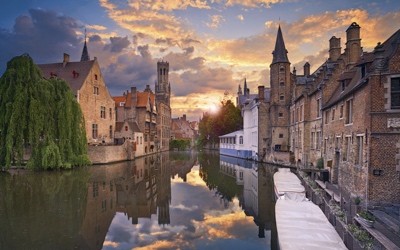
Collections
Bruge Trip
13 Activities
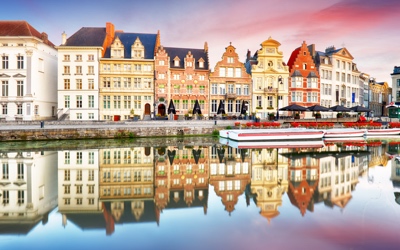
Collections
Ghent trip
10 Activities
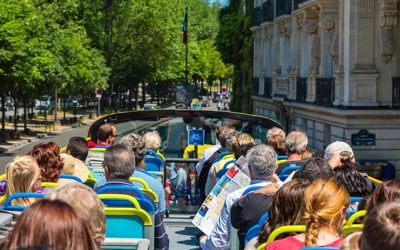
Collections
Bus tour
10 Activities
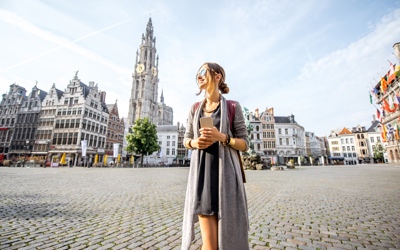
Collections
Other trips
20 Activities
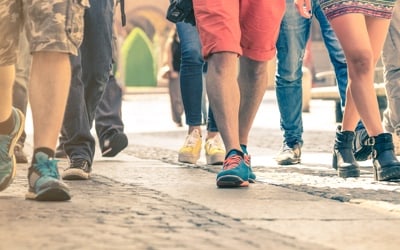
Collections
Walking tour
18 Activities

Collections
Food tasting
10 Activities

Collections
Belgian beer
14 Activities
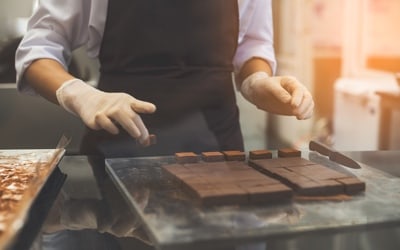
Collections
Chocolate
11 Activities
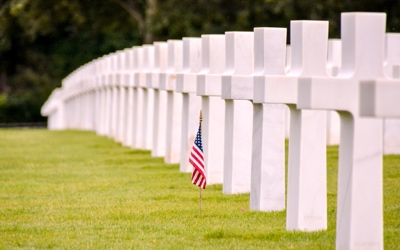
Collections
World War
10 Activities
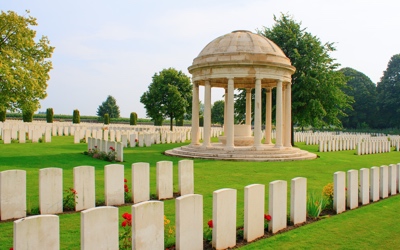
Collections
Flander trip
11 Activities

